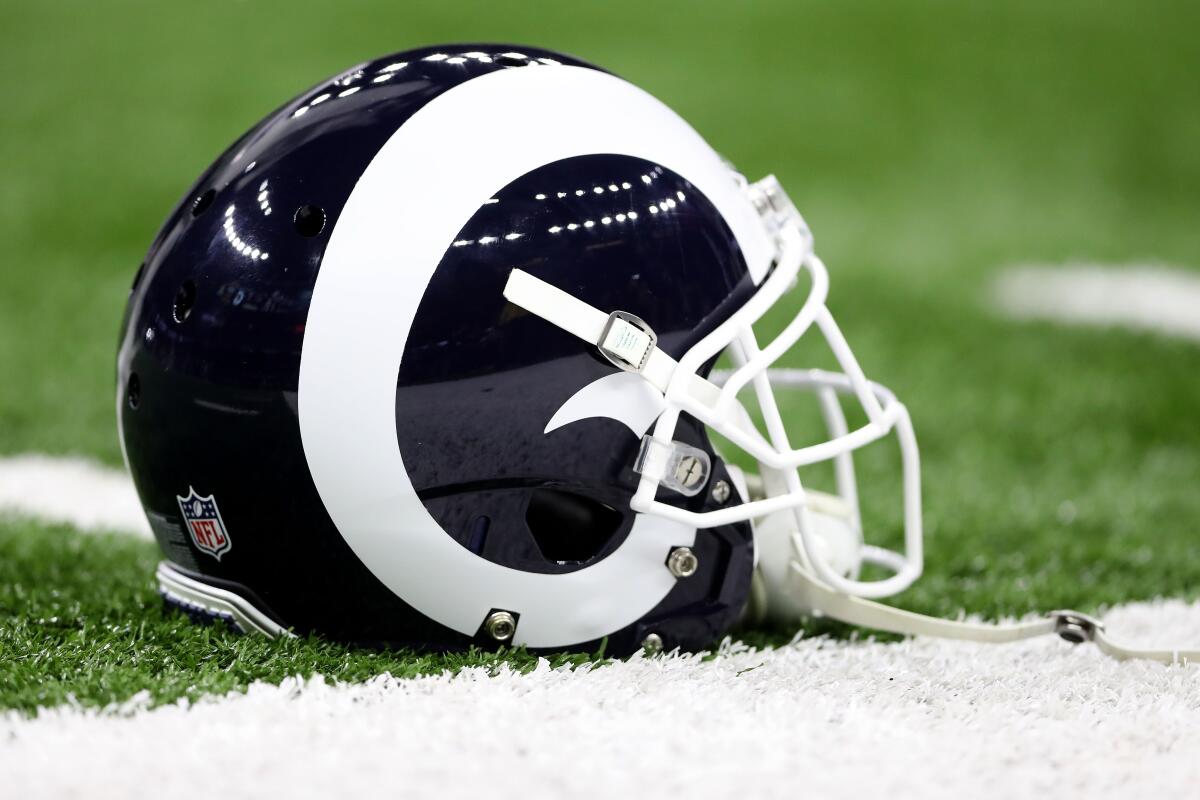5 steps to protect football players’ brains and keep the sport alive

- Share via
As more and more parents in the U.S. see the connection between football and brain damage, the game we love will change. Many will tell their teenage boys, “You can play any sport you want … except tackle football.” What’s left will be a gladiator sport.
We now know that football is harming players through repeated trauma and long-term brain damage. From the NFL on down to Pop Warner youth leagues, the game, the training and the gear must adapt to reduce harm. Decades of data tell us what needs to change.
Having represented professional athletes since 1975, I’ve been worrying about football players’ health since long before the first diagnosis of chronic traumatic encephalopathy in a former NFL player, in 2002.
In the late 1980s, I sat in the stands at Sun Devil Stadium watching a young quarterback who was also my client play against the Arizona Cardinals. I watched as a defensive player sacked him and knocked him to the turf. Blood oozed out of his ear as he lay motionless on the ground. My heart pounded as I stared at this young athlete and wondered aloud if he was dead. After what felt like an eternity, he gradually regained consciousness. Watching as the medics helped him off the field, a wave of relief washed over me, immediately followed by a crisis of conscience.
I had to make a choice 30 years ago of whether to walk away from the industry or work from within to improve it. The players and I made a lot of money as their careers took off, but I had a responsibility to my clients to do more than enrich our bank accounts. Their long-term health was more important than anything else.
That made the decision clear, so I had a new mission: understanding concussions thoroughly, the components of the injury, long- and short-term damage, recovery, education and prevention. I’ve been aligned with a number of neurologists and concussion safety advocates, and I hosted conferences to present the latest medical information to the players and their families, the leagues, teams and the public.
Since the late ’80s, we’ve learned so much about the risk to athletes in collision sports like hockey, field hockey and even AYSO soccer. Pre-adolescent brains are especially vulnerable. Repeated blows over years escalate the risk. A 2017 report on the brains of 111 former NFL players who died between the ages of 23 and 89 found almost all had CTE. Only one brain did not.
Now we have some sense of how dangerous repeated blows to the head can be. To its credit, the NFL has adopted and enforced concussion protocols that take clearly injured players off the field. But football has not changed enough. In some ways it’s getting worse, with a new generation of bigger, stronger and faster athletes who collide much harder than their predecessors did.
The best way to keep football alive is to ensure standardized safety protocols not only in professional leagues but also in collegiate, high school and youth sports. The following steps would be a good start. They are based on what we know now that we did not know in 1975, and the list should change and grow as we learn even more.
- Take hitting out of training camp and practices for kids and professionals. Save it for the games. This could cut down concussions dramatically. The NFL could make this change instantly, and other leagues would follow.
- Leagues and coaches must demand better blocking and tackling techniques that don’t involve the head and neck. These must be taught at an early age, and the dangerous current practices should be banned.
- Delay the age at which children are allowed to play tackle football. Younger brains are still developing.
- Develop and require new helmets and padding on top of the head to protect the brain.
- Continue to support research into new treatments for concussions and ensure that injured players receive the best care to minimize long-term harm when head injuries do occur. Some examples available now or on the horizon include a nasal spray administered immediately so that an acute injury might not cause long-term damage, or treatments intended to help injured brains heal, such as hyperbaric oxygen or repetitive transcranial magnetic stimulation and neurofeedback.
Until brain injuries are curable conditions, a few simple precautions would save countless players from untold suffering.
I believe that sports like football, hockey and soccer teach great values and that mastering them imparts invaluable life skills. It builds camaraderie and lifetime friendships. For a fortunate and hardworking few, playing can even be lucrative work for a few years. None of that is worth risking brain health.
Leigh Steinberg is a sports agent, philanthropist and author.
More to Read
A cure for the common opinion
Get thought-provoking perspectives with our weekly newsletter.
You may occasionally receive promotional content from the Los Angeles Times.









